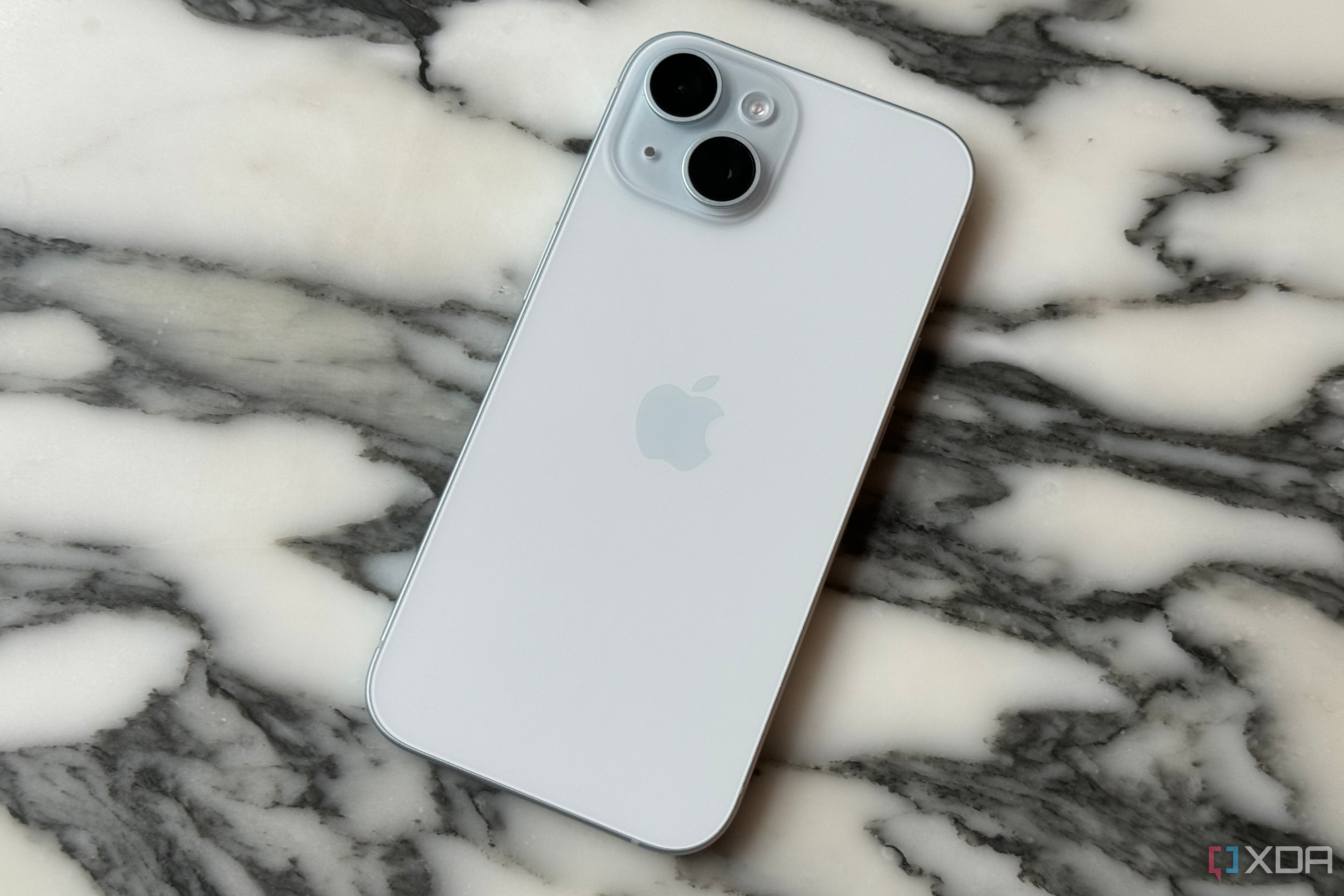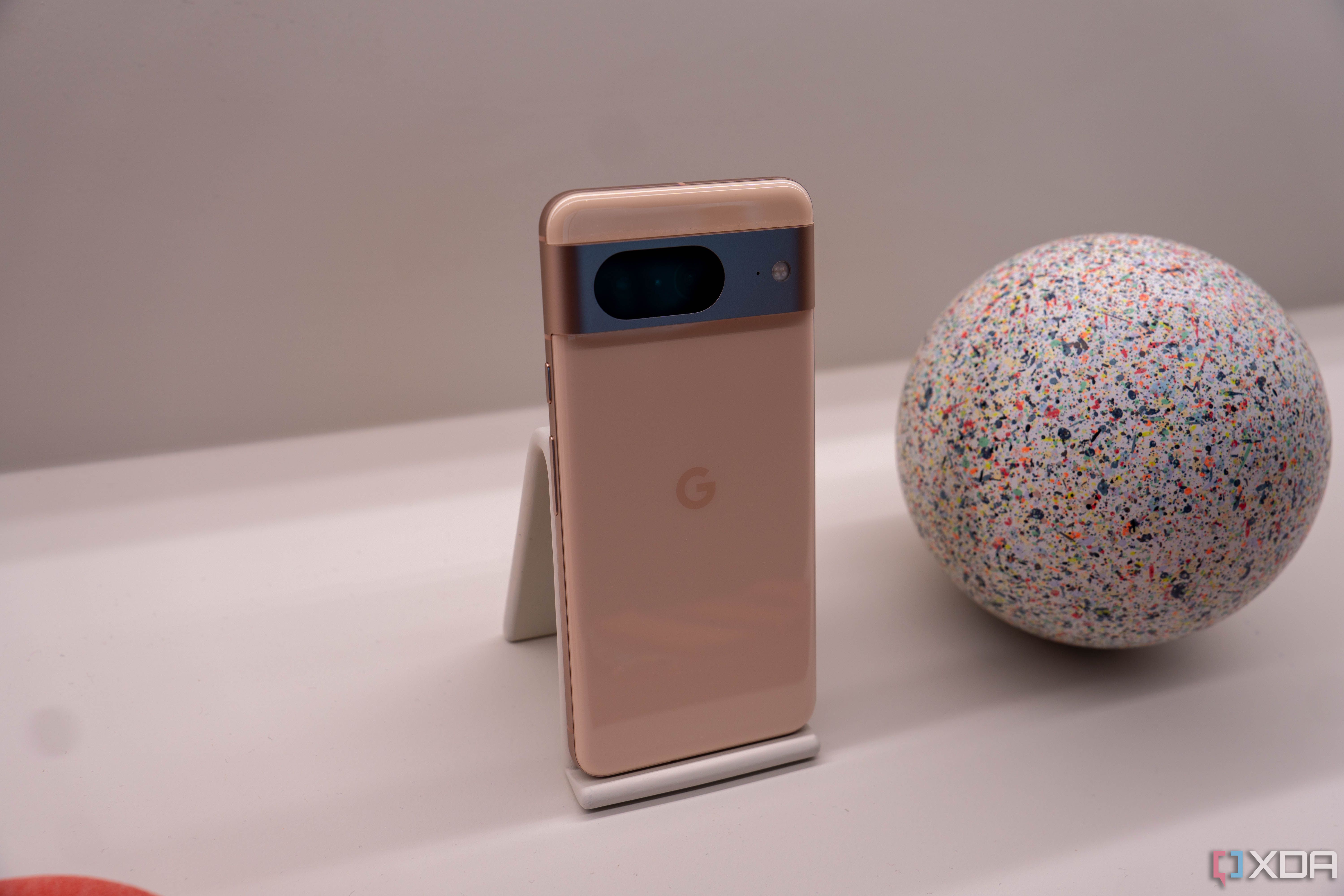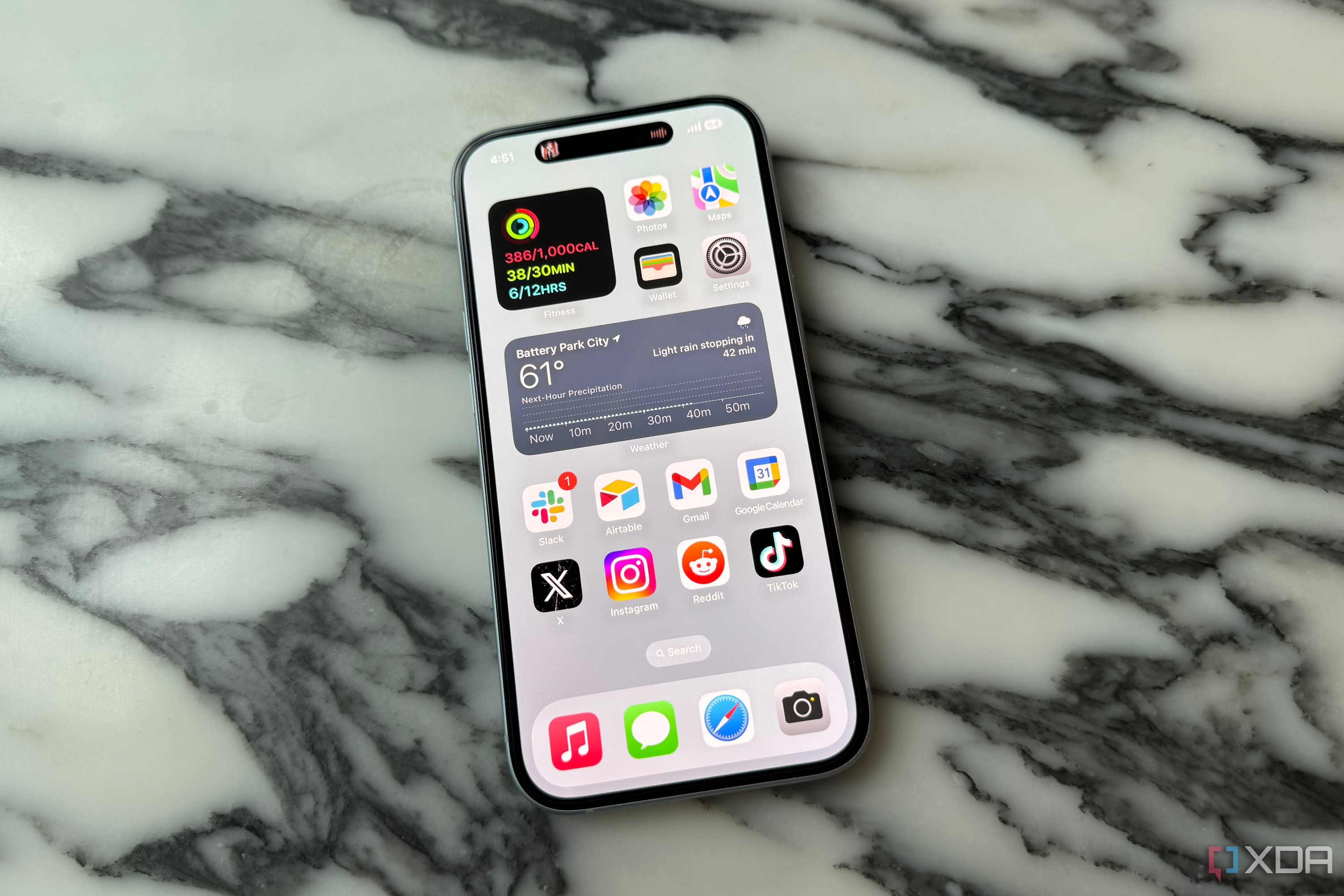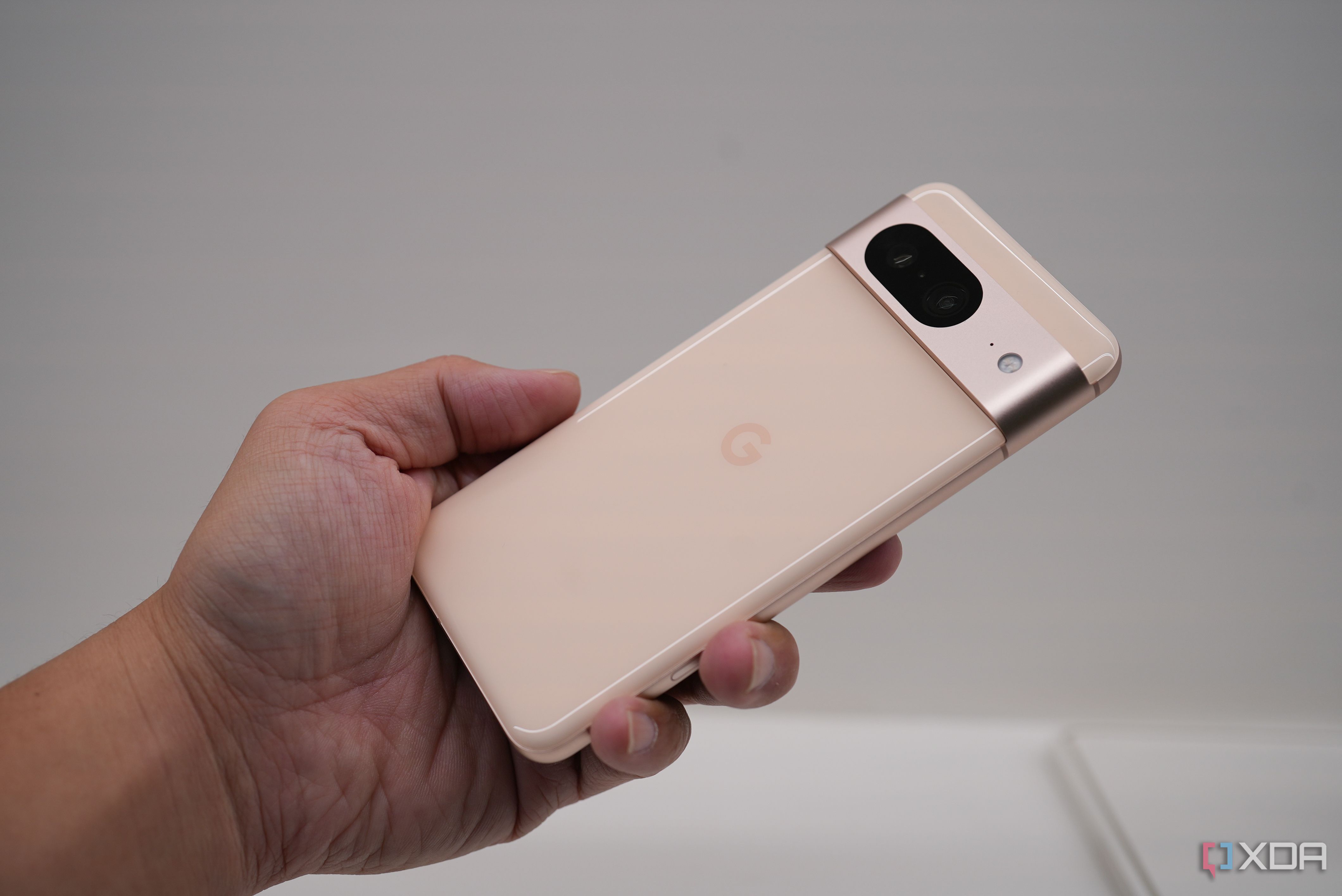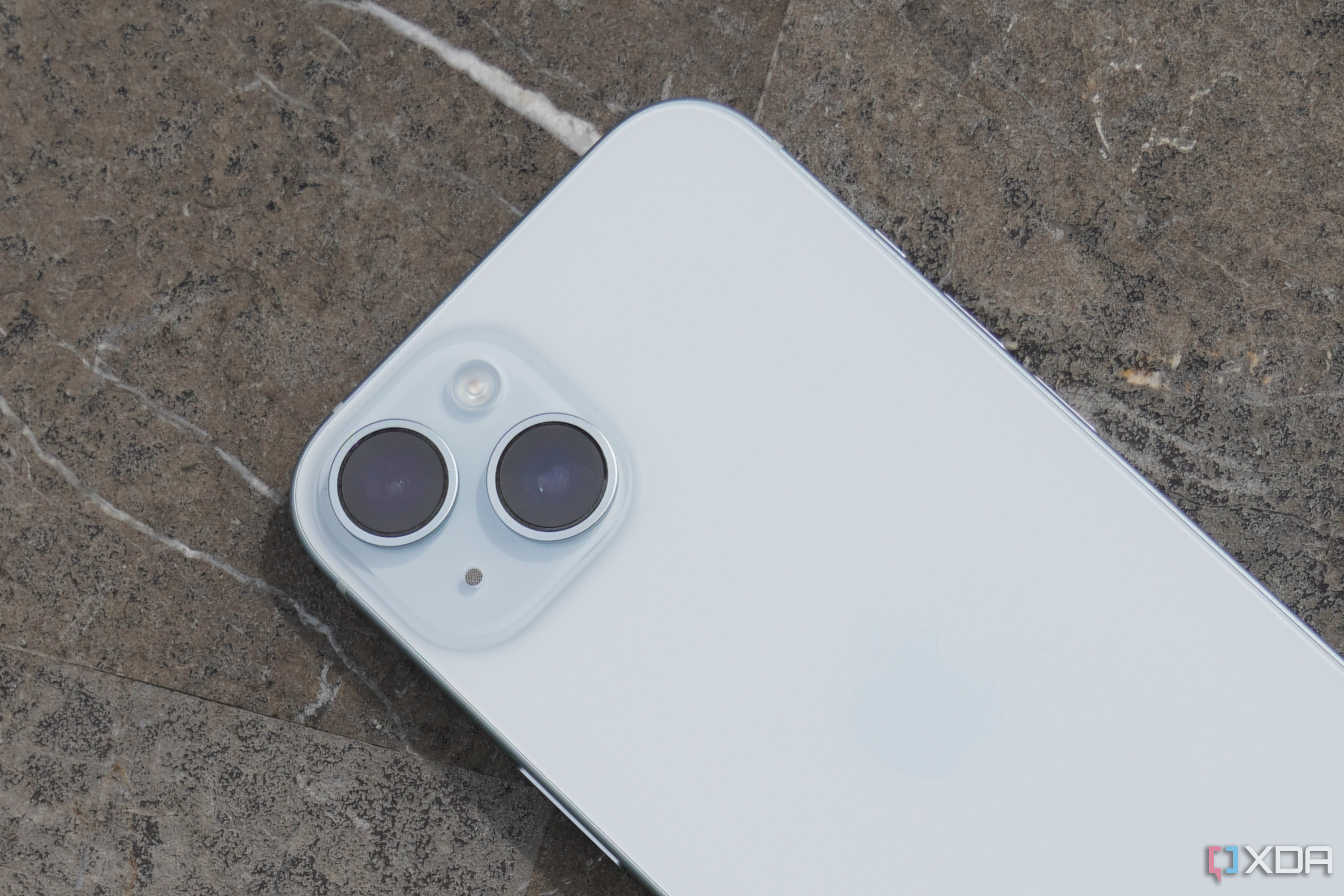-
Source: Google
Google Pixel 8
Impressive battery
The Pixel 8 is a tech powerhouse with a 6.2-inch OLED display offering stunning visuals with a 1080×2400 resolution and up to 2000 nits of peak brightness, and the refresh rate is exceptionally good at 120Hz. It’s got a massive 4575 mAh battery, ensuring you can go beyond a full day of use. Plus, Google’s multi-layer hardware security and 7 years of OS updates make it a solid choice for the security-conscious.
Pros
- Higher refresh rate with a maximum 120Hz
- Offers Wi-Fi 7 compatibility
- Better RAM support
Cons
- Limited focus on the design
- Heavier than the iPhone
- Fewer pixels per inch
-
Apple iPhone 15
Redefining power
The iPhone 15 dazzles with its stylish finish, available in a range of vibrant colors. Its sleek aluminum design is fortified with a Ceramic Shield front for added durability. Under the hood, the A16 Bionic chip powers this device with a 6-core CPU, 5-core GPU, and a 16-core Neural Engine, ensuring blazing performance. Photography enthusiasts will appreciate the advanced dual-camera system with a 48MP main lens and 12MP ultrawide lens.
Pros
- Blazing fast A16 Bionic chip
- Enhanced protection with Ceramic Shield
- Better-performing GPU
Cons
- Limited AI features
- Lower RAM support
- Less max battery
The iPhone 15 was launched September 2023, while the Google Pixel 8 was recently announced by Google on Oct. 4, and started shipping about a week later. Both devices come in the high-end range, and offer exceptional specifications.
Most people might just immediately say that the iPhone 15 is better, but there are differences between the Pixel 8 and iPhone 15. After all, it’s always the differences that help you make the right choice. Let’s compare the Google Pixel 8 and the iPhone 15 to see which is better for you.
Google Pixel 8 vs iPhone 15: Pricing, specs, and availability
The iPhone 15 and Google Pixel 8 are both newly launched devices and are available on the official website as well as Amazon, Best Buy, and other retailers. However, there is a price gap, and this is where the Pixel 8 has a slight advantage over the iPhone.
The iPhone 15 starts at a price of $730, which includes 128GB of storage, whereas the Google Pixel 8 is slightly more affordable, priced at $699 for the same 128GB storage. This means a $40 difference in favor of the Pixel 8 at the base level.
When looking at the 256GB storage variant, the iPhone 15 is priced at $830, with Apple increasing the cost by $100 for extra storage, while the Pixel 8 maintains a more competitive price at $759 for the same storage capacity.
The iPhone 15 also offers a 512 GB storage option, but it comes with a steep price tag starting at $1,030, whereas the Pixel 8 does not have this higher storage capacity option available. One thing we can see is that Apple is substantially increasing prices with increased storage, while Google brings a minor change only.
The Pixel 8 is also available on Amazon for pre-order at the same prices as mentioned on the official website. However, Apple has not yet offered the iPhone 15 officially on Amazon and you can only order via Apple’s website.
-
Google Pixel 8 Apple iPhone 15 SoC Google Tensor G3 Apple A16 Bionic (4 nm) Display 6.2-inch OLED (1080×2400), 120Hz refresh rate, up to 2,000 nits peak brightness 6.1-inch Dynamic OLED Display, FHD+ resolution 2556×1179 RAM 8GB LPDDR5X 6GB RAM Storage 128GB, 256GB UFS 3.1 storage Up to 512GB Battery 4,575mAh 3,349mAh Ports USB Type-C 3.2 USB Type-C Operating System Android 14 iOS 17 Front camera 10.5MP, f/2.2, 95 degree FoV 12MP ƒ/1.9 Rear camera 50MP, f/1.68 Octa PD wide camera, 12MP ultra-wide camera with Autofocus, 125.8-degree FoV Main: 48MP, ƒ/1.6 Ultrawide: 12MP, ƒ/2.4 Telephoto: 12MP ƒ/1.6 aperture Connectivity 5G, Wi-Fi 7, Bluetooth 5.3, NFC 5G (Sub-6GHz and mmWave) Gigabit LTE, Wi-Fi 6 (802.11ax) Bluetooth 5.3 Dimensions 5.9 x 2.8 x 0.4 inches (150.5 x 70.8 x 8.9mm) 5.81 x 2.82 x 0.31 inches (147.6 x 71.6 x 7.80mm) Colors Obsidian, Hazel, Rose Black, blue, green, yellow, pink Weight 6.6 ounces (187g) 6.02 ounces (171 gm)
Battery and performance
When it comes to performance, both devices have their own competitive advantage, making it a real challenge to choose one. Starting off, we can notice that the Google Pixel 8 features the Google Tensor 3 Chipset while the iPhone 15 comes with an A16 Bionic chip. Neither of the chipsets is a slouch. The Pixel 8 has a nonacore processor featuring a CPU architecture with 4 Cortex-A510 cores at 1.7GHz, 4 Cortex-A715 cores at 2.37GHz, and 1 Cortex-X3 core at 2.91GHz.
On the other hand, the iPhone 15 has a hexacore processor with a CPU architecture consisting of 4 Sawtooth cores at 2.02GHz and 2 Everest cores at 3.46GHz. We can notice that the iPhone 15 has a significantly higher clock speed, which would mean better performance. However, with extra cores offered in Pixel 8, there’s not much of a downside.
Plus, a standout feature for the Pixel 8 is its impressive 8GB LPDDR5X RAM, giving it a clear advantage in the memory department over the iPhone 15’s 6GB LPDDR5 RAM. In a nutshell, the iPhone 15’s higher clock speed and advanced chipset give it an edge, but the Pixel 8’s 8GB RAM and nonacore processor keep the competition close.
Now, when it comes to graphics, the Apple A16 Bionic struts its stuff with a 5-core GPU, humming along at a brisk 1398MHz. In comparison, the Pixel 8’s ARM Immortalis G715 MP10 GPU holds its own but slightly at a more modest core clock of 890MHz.
When it comes to battery life, both these devices promise to keep you going all day long. The Pixel 8 packs a hefty 4575mAh battery, which is quite impressive, while the iPhone 15 trails a bit behind with its 3349mAh battery. What’s cool is that the Pixel 8 uses Li-Po cells and can be charged with a max wattage of 27W, while the iPhone 15 sticks with Li-Ion and maxes out at 20W charging. So, you’ve got fast charging options on both sides of the fence.
Design and display
The iPhone 15 may not have much improvement in design with regards to its predecessors, but comparing it with Google Pixel 8, it’s quite impressive.
In regards to dimension specs, Apple takes the lead with a more refined and well-balanced design. The iPhone 15 measures 2.82 x 5.81 x 0.31 inches, weighing in at 6.02 ounces. Its aluminum frame not only contributes to a lighter device but also offers durability. The Ceramic Shield front offers four times better drop protection against other smartphones and the color-infused glass back adds to the style.
On the other hand, the Pixel 8 measures 2.8 x 5.9 x 0.4 inches with a weight of 6.6 ounces. While it also comes with a strong protection in the form of Corning Gorilla Glass Victus, it is notably heavier than the iPhone 15. Besides, the overall premium finish of the iPhone makes it a standout device.
However, we can notice the real competition in terms of the display. The iPhone 15 has a 6.1-inch Super Retina XDR OLED display while the Pixel 8 comes with a 6.2-inch Actua OLED display. Apple, of course, takes the lead with its Super Retina XDR technology. On top of that, you’ll see a better resolution offered in iPhone 15 at 2556×1179 pixels at 460 PPI. The Pixel 8 falls behind with 1080×2400 pixels at 428 PPI. The major difference in pixels per inch shows that the iPhone 15 will offer a clearer, sharper, and vibrant display.
But, one aspect where Pixel 8 takes a clear lead is the refresh rate. The Pixel 8 offers a variable refresh rate at 60-120Hz, while the iPhone 15 offers a 60Hz refresh rate only. You can expect a lot of improvement and enhanced smoothness in this field for the Google Pixel 8. And, it’s rather disappointing for Apple to not enhance the refresh rate when most of the latest devices, including the Galaxy S23 and many others, are.
As for other elements like contrast ratio, the Pixel 8 offers 1,000,000:1 contrast ratio while the iPhone 15 has a 2,000,000:1 contrast ratio. By definition, you can expect to see better blacks, improved picture quality, and overall, a much more vibrant viewing experience. As for brightness, both devices have the capability of reaching a peak max brightness of 2000 nits. Although, in HDR mode, the Pixel 8 can reach up to 1400 nits while the Apple iPhone 15 offers a slight improvement at 1600 nits.
It is worth noting that the iPhone 15 is offered in black, blue, green, yellow, and pink, while the Pixel 8 is only offered in Hazel, Obsidian, and Rose. With all these aspects in mind, the iPhone 15 lags behind only in terms of variable refresh rate. All other key features are an absolute win for Apple, which is why the iPhone 15 takes the lead here.
Cameras
The Pixel 8 may lack certain design elements, but one thing Google hasn’t forgotten about is the camera. The Pixel 8 comes with a 50MP Octa PD wide camera with a ƒ/1.68 aperture. The iPhone 15, on the other hand, has a 48MP camera with a ƒ/1.6 aperture. The gap is thin, but the iPhone 15 also offers 100% focus pixels for super-high-res photography in 24MP and 48MP variants. The Pixel 8 offers Super Res Zoom up to 8x.
One is assured of the idea that the iPhone 15 won’t mess up the picture quality even with magnification, and of course, the portraits are a must too! Besides, Apple has added an extra protection to the camera with the sapphire crystal lens cover. Pixel misses out on that.
One similarity between the two is that both are equipped with a 12MP ultrawide camera. A fine line is drawn with Pixel 8 offering ƒ/2.2 aperture and iPhone 15 coming with ƒ/2.4 aperture. Also, the iPhone comes with a 120-degree field of view while the Pixel 8 has it slightly better at 125.8 degrees.
As for the video capabilities, the Pixel 8 offers up to 4K video recording at 24 fps, 30 fps, and 60 fps. The iPhone 15 is quite similar with 4K video recording at 24 fps, 25 fps, 30 fps, or 60 fps.
<div class=”responsive-img image-expandable img-article-item” style=”padding-bottom:75%” data-img-url=”https://static1.xdaimages.com/wordpress/wp-content/uploads/2023/10/google-pixel-8-camera.png” data-img-desc=””Google”” data-modal-id=”single-image-modal” data-modal-container-id=”single-image-modal-container” data-img-caption=”null”>

Moving on to the front camera, the iPhone 15 features a 12MP camera, but the Pixel 8 offers a 10.5MP camera. The iPhone 15 struts its stuff with an ƒ/1.9 aperture, giving you some great low-light capabilities. Meanwhile, the Pixel 8 offers an ƒ/2.2 aperture, which is still solid but just a tad less snazzy.
Both these devices can shoot 4K videos with their front cameras, so no surprise there. Google’s Pixel 8 claims to have a fixed focus, while the iPhone 15 steps it up with autofocus and focus pixels support. But for slow motion, the Pixel 8 has a better support. You can expect slo-mo video up to 240 fps from the front camera while the iPhone 15 offers up to 120 fps only.
Google Pixel 8 vs iPhone 15: Which one should you choose?
Both the iPhone 15 and Google Pixel 8 are among the best phones with a serious neck-to-neck finish in several departments. For those who are looking for an Apple-ecosystem-centric device, with enhanced camera capabilities, and top-notch performance, the iPhone 15 is the answer.
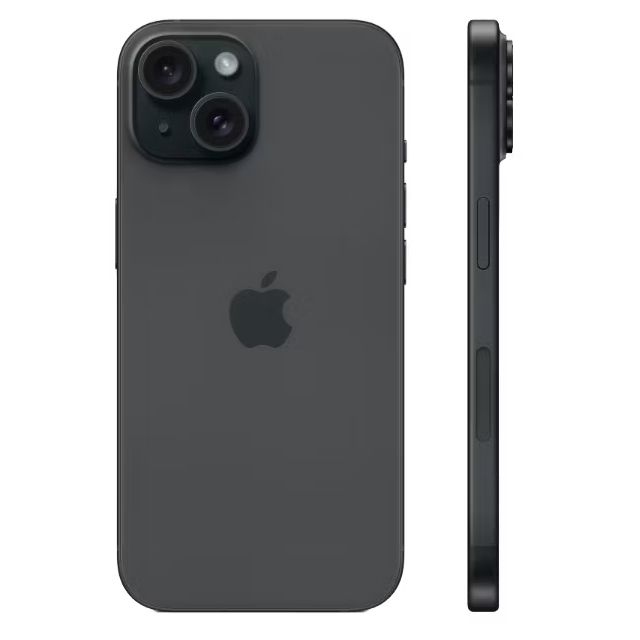
Apple iPhone 15
The iPhone 15 is the ultimate choice for those craving high-speed performance. It’s fueled by the lightning-fast A16 Bionic chip with a 6-core CPU. Whether you’re a content creator, or simply someone who values speedy responsiveness, the iPhone 15’s unrivaled performance makes it the top pick for speed enthusiasts. Experience high-end mobile performance with the iPhone 15 thanks to Apple’s own A16 Bionic chip.
While the Pixel 8 is also a good choice in terms of performance, it falls behind in terms of camera specs and the overall design. But, in case you are a big fan of fast and smooth displays, the iPhone should be off of your list because it does not offer a higher refresh rate. The Pixel 8 would be a much better pick in that case.
Lastly, If you are opting for the Pixel 8 Pro, don’t forget to check out our roundup of the best Google Pixel 8 Pro cases.
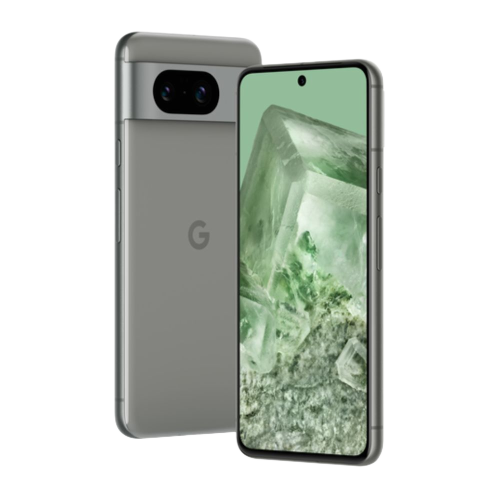
Google Pixel 8
The Pixel 8 brings a smart touch to your smartphone experience with enhanced AI features, making tasks seamless and intuitive. With its impressive 4575 mAh battery, it ensures you stay connected and powered up throughout the day. The high refresh rate OLED display keeps everything smooth, from scrolling through social media to gaming. It’s a perfect blend of intelligence and endurance.

